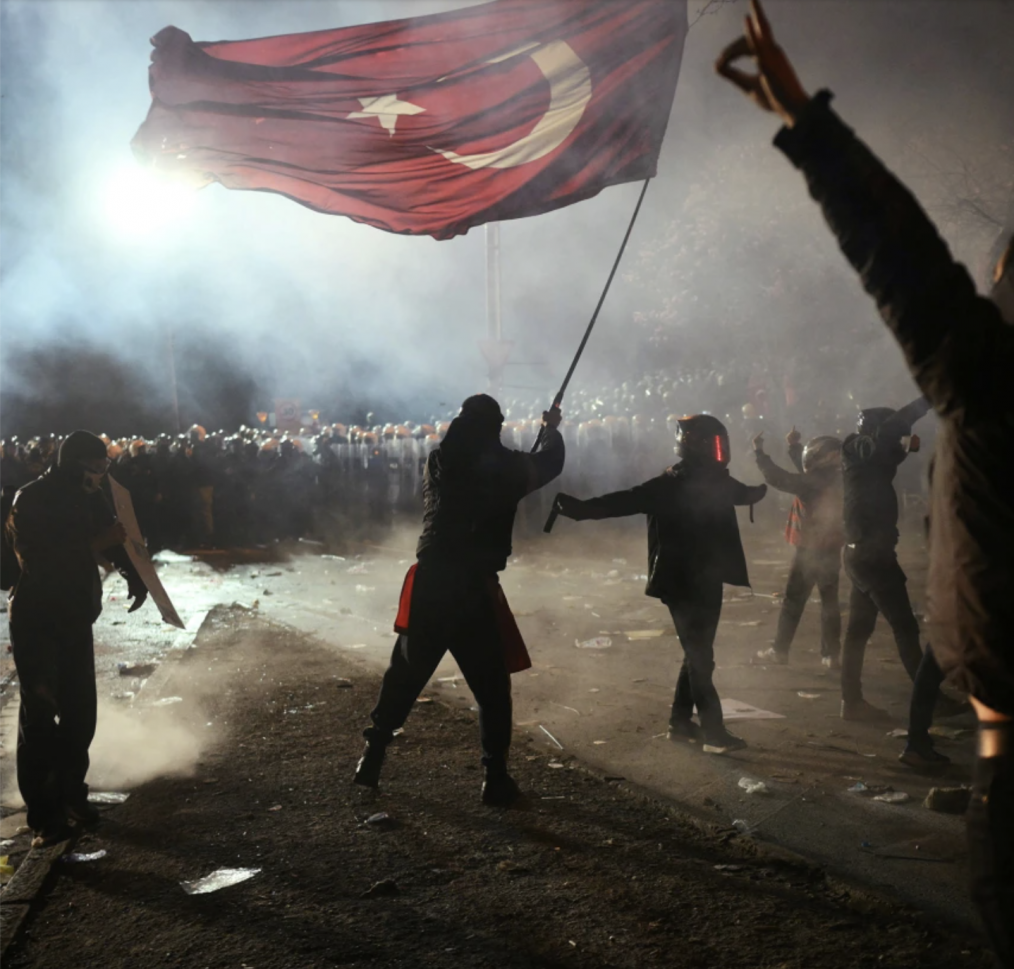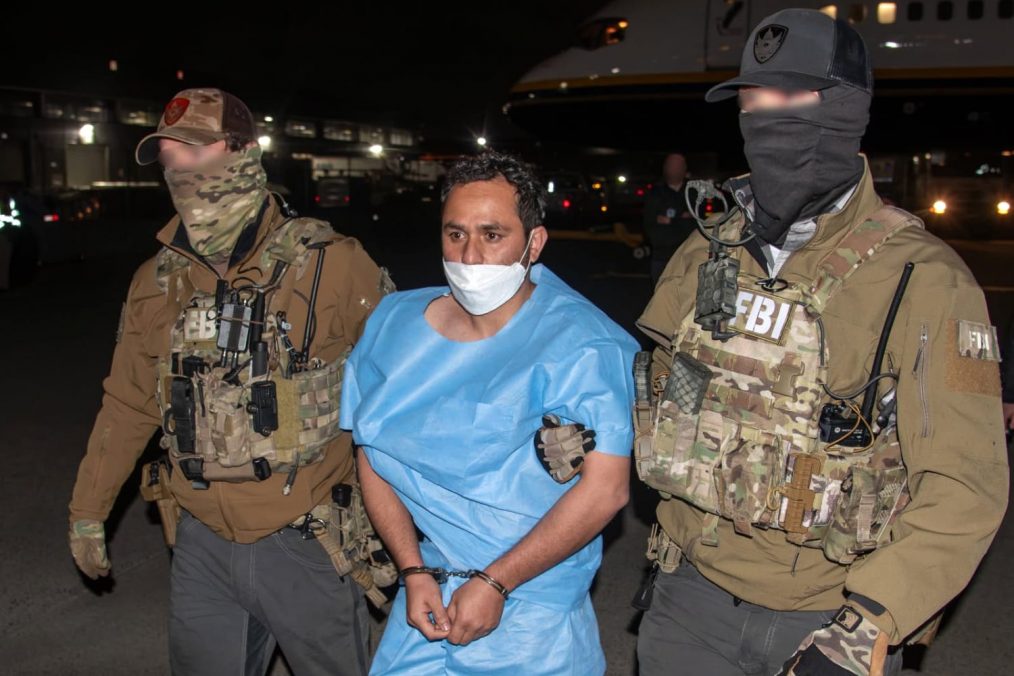On March 5, 2025, President Donald Trump announced the arrest of Mohammad Sharifullah, also known as “Jafar,” an ISIS-K operative linked to the August 26, 2021, bombing at Kabul’s Abbey Gate that killed 13 U.S. service members and more than 170 Afghan civilians. While this arrest is a critical counterterrorism success, it also reinforces a long-standing truth: Pakistan remains deeply entangled with the militant networks that continue to threaten regional and global security.
Sharifullah’s Capture: A Joint Intelligence Operation
Sharifullah was apprehended near the Pakistan-Afghanistan border by a Pakistani intelligence unit, acting on CIA intelligence. Once in custody, he was transferred to U.S. authorities and now faces prosecution in Washington, D.C. According to the Department of Justice, he admitted during an FBI interview on March 2, 2025, that he helped prepare for the Abbey Gate suicide bombing by scouting the area and planning the attack route to avoid detection.
This arrest confirms what counterterrorism analysts have long argued: the Afghanistan-Pakistan border remains a lawless corridor exploited by terror groups. Sharifullah’s presence in this zone is no coincidence—it’s part of a broader pattern enabled by decades of strategic tolerance and facilitation of extremists by the Pakistani state.
Former CIA officer Sarah Adams, who led investigations into terrorist threats including Benghazi: Know Thy Enemy, has publicly questioned the U.S. narrative. She stated that while Sharifullah met ISIS-K leaders the week of the bombing, his role was minor—delivering messages, not planning attacks.
“My biggest concern is that Sharifullah—someone so low-level—is being treated like a Bin Laden… Our government is treating him like a high-value target when he’s not.”
ISI and the Militant Ecosystem
Pakistan’s Inter-Services Intelligence (ISI) has a decades-long history of nurturing militant proxies. The Haqqani Network—a group responsible for high-profile attacks including assaults on the U.S. Embassy in Kabul—has been called a “veritable arm” of the ISI by Admiral Mike Mullen, former Chairman of the Joint Chiefs of Staff. Despite banning the Haqqani Network in 2015 after pressure from then-Secretary of State John Kerry, Pakistan never dismantled its infrastructure. Instead, the network continued operations and today has deep ties with the Taliban government in Kabul.
Sharifullah’s affiliation with ISIS-K does not make Pakistan’s role any less central. In fact, ISIS-K was founded in 2015 by disaffected members of Tehrik-e-Taliban Pakistan (TTP) and other regional militants—many of whom were trained, funded, or sheltered within Pakistani borders. The U.S. Director of National Intelligence and the National Counterterrorism Center have both highlighted how ISIS-K exploits ungoverned spaces in the border region to plan, recruit, and launch attacks.
A Pattern of Duplicity
The Sharifullah case fits into a broader pattern of Pakistan playing both sides. While accepting billions in U.S. counterterrorism aid—$33 billion between 2002 and 2018—Pakistan continued to shelter and empower groups responsible for attacks on American forces and Afghan civilians. Osama bin Laden lived in Abbottabad for years, just a short drive from Pakistan’s military academy, before being killed by U.S. Navy SEALs in 2011.
President Trump was among the few U.S. leaders who openly called out Pakistan’s duplicity. In a January 2018 tweet, he declared that the U.S. had given Pakistan “more than 33 billion dollars in aid over the last 15 years,” and received “nothing but lies and deceit” in return. Later that month, the Trump administration suspended $300 million in military aid due to Pakistan’s failure to take “decisive action” against terrorist groups targeting American forces.
Pakistan’s Continued Challenges
Despite various military operations and counterterrorism laws, Pakistan has failed to eliminate safe havens for militants. Groups like the TTP and ISIS-K remain active, resilient, and capable of launching deadly attacks. The United States Institute of Peace notes that while Pakistan backs the Afghan Taliban, the Taliban continues to shelter the TTP—Pakistan’s own internal threat. The irony is deadly: Islamabad enables the very forces that later turn their guns on Pakistani soil.
Conclusion: More Than One Arrest
Mohammad Sharifullah’s arrest is a milestone, but it cannot be viewed in isolation. It is a symptom of a deeper, systemic issue: Pakistan’s long-standing entanglement with jihadist groups. Until that nexus is broken—through pressure, sanctions, and diplomatic accountability—the threat will persist.
True justice for the victims of the Kabul airport bombing requires more than prosecution. It demands that the U.S. and its allies confront the uncomfortable reality of Pakistan’s terror infrastructure. Only by dismantling the pipeline that produces men like Sharifullah can regional and global security be assured.
Since the Taliban’s return to power in August 2021—with direct support and safe harbor from Pakistan—Afghanistan has once again descended into authoritarian rule and extremism. The regime’s hardline enforcement of Sharia law has erased decades of progress, banning women from schools, workplaces, and public life. These actions have turned Afghanistan into a pariah state—isolated, oppressive, and increasingly unstable.
More critically, Afghanistan is once again becoming a haven for terrorist groups. ISIS-K, Al-Qaeda, and other extremist networks now operate freely under the Taliban’s watch, raising alarms across global intelligence communities. The arrest of Mohammad Sharifullah, the ISIS-K operative behind the Abbey Gate bombing, is a grim reminder: the threat did not end with the U.S. withdrawal—it evolved and embedded itself deeper into a region historically used to harbor and export terror.
America must not repeat the mistake of turning its back on Afghanistan. U.S. disengagement in the 1990s gave terrorists space to plan 9/11. Today, the risk is just as real. One captured terrorist does not absolve Pakistan, nor does it make the Taliban a partner. These actors have long played both sides—sheltering extremists while leveraging diplomacy for legitimacy.
Terrorists cannot be allies. The United States must be clear-eyed and firm: there can be no recognition of the Taliban and no trust extended to Pakistan simply because they handed over one operative. The stakes are too high. Afghanistan’s collapse into extremism threatens not just the region—but the security of the world. Not again. Not on our watch.
About the Author
Ahmad Shah Mohibi is the Founder of Rise to Peace and Director of Counterterrorism. He is a former U.S. advisor who supported U.S. efforts in Afghanistan and Washington. He authored Inside the Mindset of Terrorists, a chapter in NATO’s Enduring Mission: Security in a Changing World, and has written more than 100 articles, including a landmark report on ISIS-K.
X: @ahmadsmohibi
Ahmad Shah Mohibi, Founder of Rise to Peace and Director of Counterterrorism, served as a U.S. advisor in Afghanistan during Operation Enduring Freedom and later supported national security initiatives in Washington, D.C.







